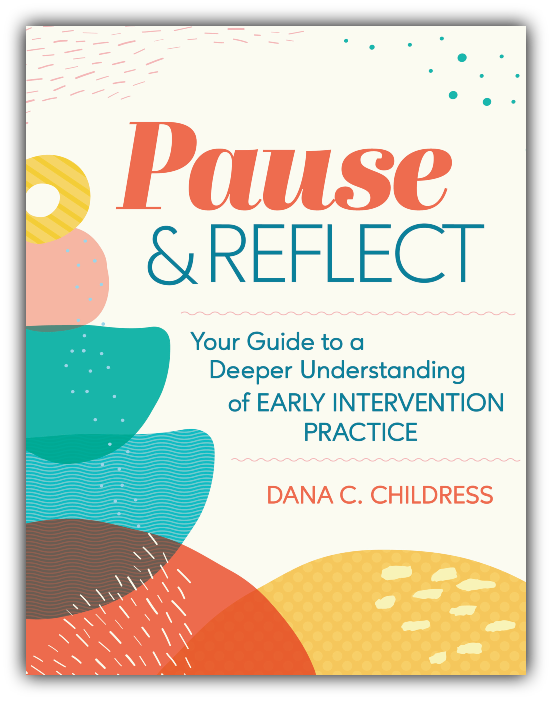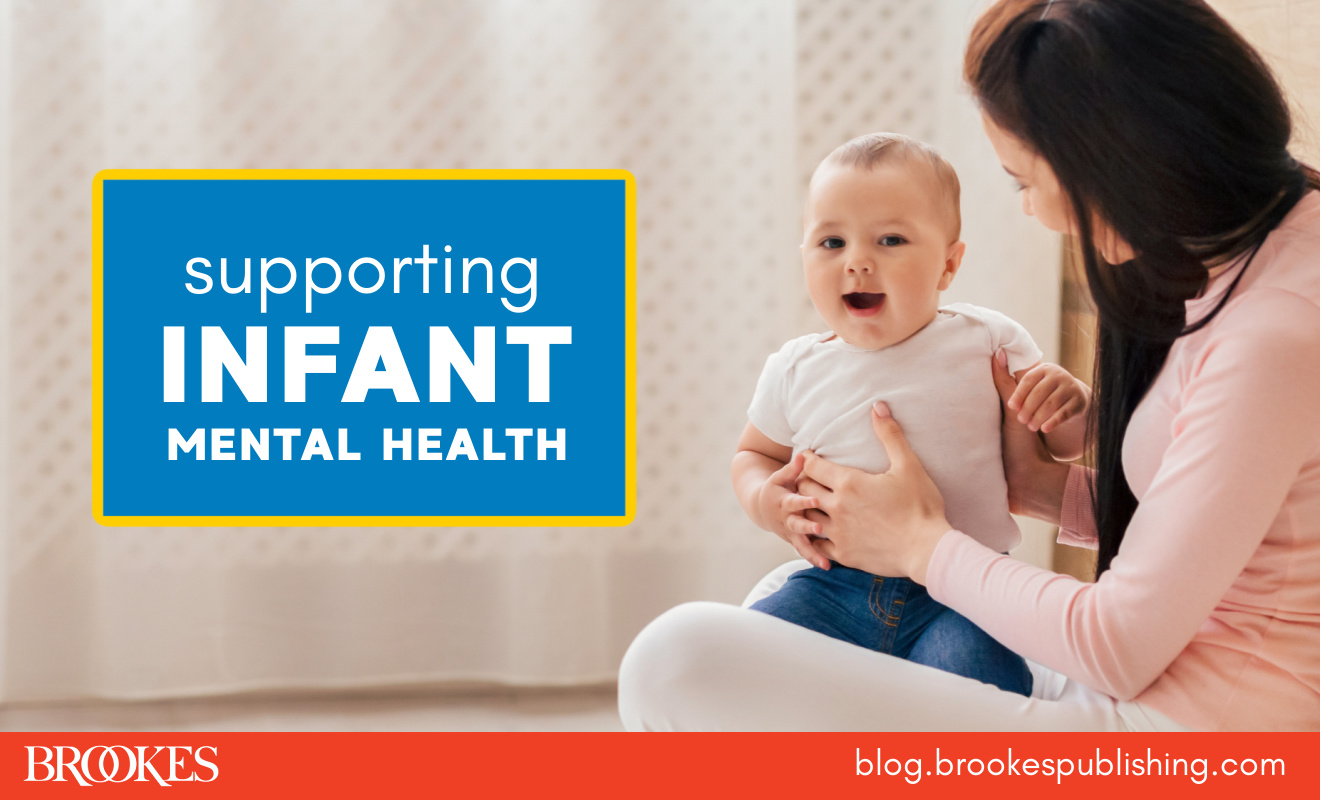6 Things to Do Before an Early Intervention Visit
June 19, 2025
 This post has been excerpted and adapted from the early intervention guidebook Pause and Reflect by Dana Childress.
This post has been excerpted and adapted from the early intervention guidebook Pause and Reflect by Dana Childress.
Before you leave for an intervention visit with a family, it can be very helpful to dedicate time for preparation. No, I don’t mean time to pack your toy bag. Rather, this step involves preparing yourself and helping the family prepare for the visit.
It’s so easy to bounce from visit to visit during a busy day, assuming you can remember what needs to be done. Taking even 5 minutes to get your head in the game before the visit will help you make sure you are present with the family during the visit. Similarly, checking in with the family before each visit increases the likelihood that caregivers will be physically and mentally available and ready to assume their active roles.
Here are 6 specific things to do before a visit:
Review the previous visit’s contact note. I know from experience how easy it is to go from visit to visit without taking time to check in with yourself about what you are supposed to be addressing with the family. Make time to review your contact note from the previous visit. This will jog your memory about what has been done, what needs to be addressed, and what was planned for the next visit. It reminds you of the joint plan you developed with the caregiver at the last visit—the plan that identified what the caregiver planned to do between visits and what you and the caregiver would address next.
Review the IFSP outcomes. The child’s and family’s outcomes should be listed on your contact note as reference points for documenting progress. Review them before each visit to get grounded in the long-term goals for intervention. Or, if you haven’t done it in a while, review the full IFSP.
Revisit or develop a flexible plan for what you will do. If you developed a joint plan with the caregiver at the last visit, revisit the plan in your notes and in your head. Think about what might happen during the planned activity or routine. Consider what you want to observe. Think ahead about how the IFSP outcomes might be addressed. This mental preparation primes you for supporting the caregiver and child. Keep in mind, however, that any plan can get tossed out the window if needs, priorities, or circumstances change. So have your plan ready, but go into the visit with an open heart and mind.
Pause before bringing materials to the visit. Many practitioners still bring toys to intervention visits. Here’s where I stand on bringing toys or materials: Avoid it in favor of using what’s in the home (or other environment), because what is already there will still be there when you leave. This is a great way to reinforce the idea that the family has what they need to facilitate the child’s development.
However, there may be times when bringing something to loan to the family can be beneficial. (For instance, maybe you want to bring books because the caregiver mentioned needing them.) Be absolutely sure that the item is something the caregiver wants to use rather than something you think they should use. Whenever the temptation arises to bring something with you, pause and ask yourself: Am I bringing this item because it will benefit the caregiver and child or am I bringing it because it makes me feel better?
Check in with the caregiver. Depending on program policies (or your own preferences), you may want to reach out to the caregiver before your next visit. A quick phone call, text, or email can offer a reminder about the date and time of the visit. You can ask if the plan established at the last visit is still appropriate, which serves to touch base in case priorities have changed.
Depending on the plan for the next visit, the caregiver might need to prepare too. For example, if you and the caregiver had planned for you to observe the child’s behavior during a mealtime, the caregiver probably needs to make sure the child does not eat before you arrive. If plans have changed, that’s okay. Knowing ahead of time allows both of you the time and space to switch gears.
Remind yourself to be flexible. Balance your preparation with a healthy dose of flexibility and patience, knowing that the best laid plans can be thwarted by the tiniest of humans. When plans change, give the caregivers the benefit of the doubt. They are doing the best they can. When plans fall through, consider your part in the planning first. Maybe it was your plan and not the caregiver’s. Maybe life happened and distracted the family from the plan. Maybe the plan was confusing. Maybe the caregiver really did just forget. Keep in mind that your visit is a small moment in the family’s week. You are one part of their big picture. Patience, flexibility, and a balanced approach will help you be an important part of that picture.
Review this post before a visit and use these strategies to be sure you’re as mentally and physically ready as possible to support the family. And for a systematic, organized, and efficient way to pause and reflect on your practices, get the practical workbook behind today’s blog post!




Write a Comment
Your email address will not be published. Required fields are marked *
Post a Comment